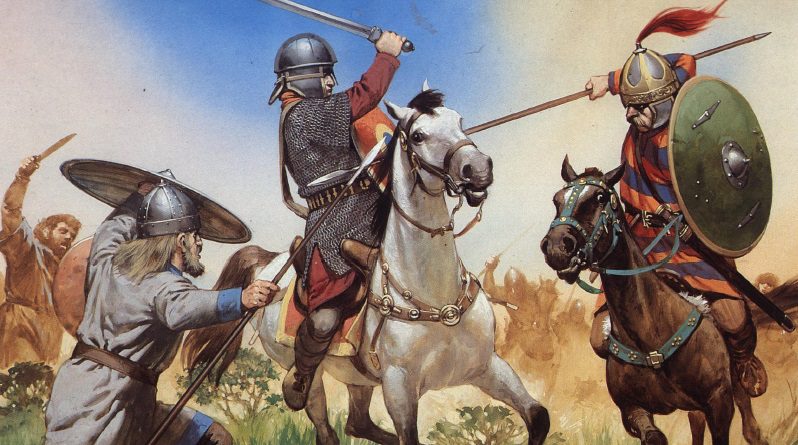First Strike
Who goes first: the Fighter or the Orc?
To add some realistic tension to combat, we’ve developed an alternate initiative method making use of a random element and relevant modifiers. The primary benefit is that it adds spice to the otherwise back-and-forth rut typical of the official initiative system. As a secondary benefit, the system incorporates realistic variables that can improve or degrade a combatant’s first-strike capability.
Initiative Basics
Initiative is determined at the start of every combat round. To calculate initiative, 1d12 is rolled and modified by the appropriate Initiative Rating (IR) modifiers (see below). The combatant with the highest result acts first. When this combatant’s action is complete, the combatant with the next highest initiative result acts. This continues until all combatants have acted; after the last action is performed, the combat round ends and the next one begins with initiative determination.
This system works best when each combatant rolls initiative separately; individual PCs should always roll their own initiative to determine when they act during the combat round. If the number of PC foes is high, the DM may rule that a single roll is made for each type of opponent in the battle. For example, if a party of four PCs encounters an ogre and five orcs, each of the PCs would roll their own initiative and the DM can probably manage the six initiative rolls on his end. If instead the same party encounters a pack of 14 giant rats herded by 3 kobold guards, the DM would probably make only two initiative rolls: one for the rats and one for the kobolds.
Regardless of IR results or how many combatants act, all combat actions are performed in the same combat round (unless an action chosen normally consumes more than one round). Remember that a combatant may move up to half his combat movement rate and still attack. Finally, because actions occur in the order of highest IR results to lowest, actions are resolved immediately (i.e., actions no longer occur simultaneously, unless two or more combatants share the same IR result).
Initiative Rating Modifiers
| Condition | Modifier | Condition | Modifier |
| Weapon Mastery: UN | -4 | Attacker Size: T | +4 |
| Weapon Mastery: BA | -2 | Attacker Size: S | +2 |
| Weapon Mastery: SK | 0 | Attacker Size: M | 0 |
| Weapon Mastery: EX | +1 | Attacker Size: L | -2 |
| Weapon Mastery: MS | +2 | Attacker Size: G | -4 |
| Weapon Mastery: GM | +4 | Changed Weapon: | -2 |
| Weapon Size: S | +2 | Magic Item Use | -1 |
| Weapon Size: M | 0 | Dexterity Adjustment | var. |
| Weapon Size: L | -2 | Cast Spell | -spell level |
Initiative Rating in Combat
As mentioned, initiative is determined via 1d12, modified by the conditions on the preceeding table. Combat actions occur—immediately—in the order of highest IR result to the lowest.For convenience and easy look-ups, we recommend that a combatant’s IR with each weapon or attack type be noted on the character sheet or NPC/monster description. Below are some examples, using the data above:
Human Fighter with DEX 13 and Skilled mastery in the short sword: IR = +3 [+0 (Medium attacker) +1 (DEX adj.) +0 (Skilled mastery) +2 (weapon size) = +3]
Ogre warrior with DEX 8 and Expert mastery in the long bow: IR = -4 [-2 (Large attacker) -1 (DEX adj.) +1 (Expert mastery) -2 (weapon size) = -4]
Human Magic-user with DEX 16 casting magic missile: IR = +1 [+0 (Medium attacker) +2 (DEX adj.) -1 (1st-level spell) = +1]
Human Magic-user, as above, casting web from a spell scroll: IR = +1 [+0 (Medium attacker) +2 (DEX adj.) -1 (magic item) = +1]



